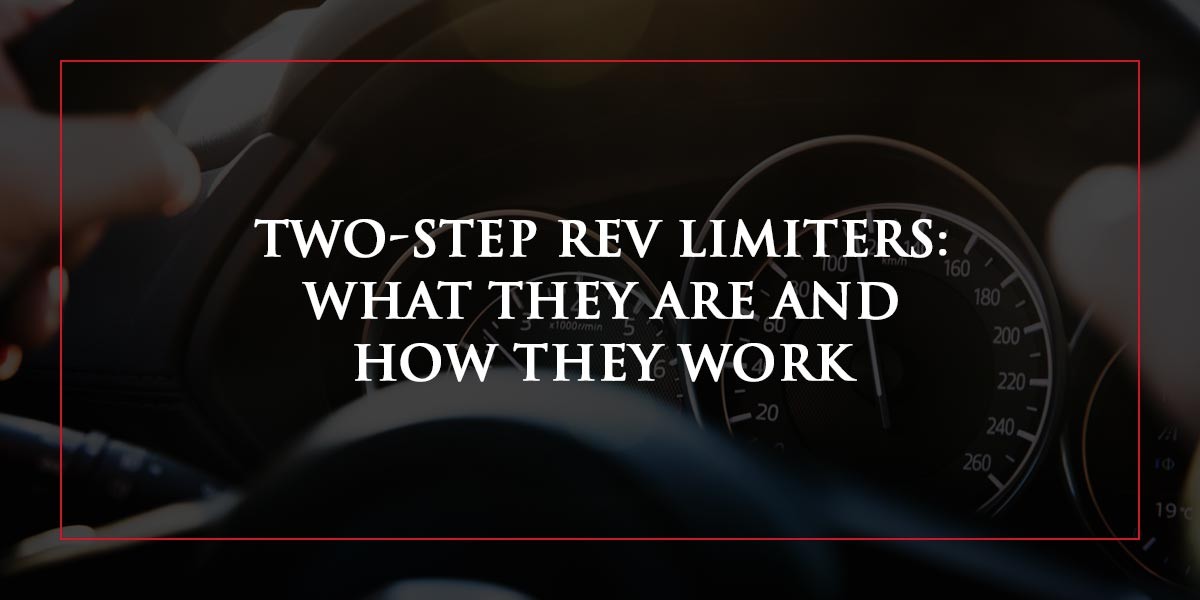For car enthusiasts and those looking to maximize their vehicle’s performance, understanding the nuances of engine control systems is crucial. Among these systems, the two-step rev limiter stands out as a valuable tool. But What Is 2 Step For Cars exactly, and how does it contribute to improved vehicle dynamics?
This article delves into the world of two-step rev limiters, explaining their function, benefits, and considerations for installation. Whether you’re a seasoned racer or simply curious about performance modifications, understanding the two-step system can offer valuable insights.
Defining the Two-Step Rev Limiter
A two-step rev limiter is an electronic engine management device designed to restrict the engine’s revolutions per minute (RPM) at two distinct levels. This dual-stage control is the defining characteristic of the system. Unlike a standard rev limiter that typically engages only at the engine’s redline to prevent damage, a two-step system offers an additional, lower RPM limit.
The primary purpose of this lower RPM limit is to facilitate launch control. By setting a lower rev limit, drivers can hold the throttle wide open before launching, allowing them to build boost in turbocharged vehicles or reach the engine’s power band in naturally aspirated ones. The higher RPM limit functions as a traditional rev limiter, protecting the engine from over-revving during gear changes or at top speed. This combination of features makes the two-step rev limiter particularly popular in performance driving and motorsports.
How a Two-Step Rev Limiter Works
The operation of a two-step rev limiter hinges on its ability to control engine RPM at two predefined points. It achieves this by interrupting the ignition system. When the engine RPM reaches either the lower or higher set limit, the two-step system momentarily cuts off the ignition spark. This ignition cut is crucial for building boost and managing engine speed effectively.
At the lower RPM limit, typically engaged for launch control, the ignition cut allows unburnt fuel to pass into the exhaust manifold and turbine housing in turbocharged engines. This fuel then combusts in the exhaust system, rapidly spooling the turbocharger. This pre-spooling of the turbocharger results in significantly reduced turbo lag and a more powerful launch from a standstill. Traditional factory rev limiters often cut fuel supply instead of ignition, which is less effective for building boost. The higher RPM limit operates similarly, cutting ignition to prevent the engine from exceeding its safe operating speed, thus protecting against potential engine damage during aggressive driving or gear shifts.
Advantages of Installing a Two-Step Rev Limiter
Implementing a two-step rev limiter offers several compelling benefits, particularly for performance-oriented drivers:
- Enhanced Launch Performance: The most significant advantage is improved launch control. By allowing drivers to build boost or reach the engine’s optimal power band before launching, two-step limiters ensure maximum power is available from the starting line. This translates to quicker acceleration and improved track times.
- Engine Safety and Protection: The higher RPM limit acts as a safety net, preventing accidental over-revving. This is especially crucial during spirited driving or racing, where gear changes might be missed or engine speed can climb rapidly. Protecting the engine from over-revving minimizes the risk of costly engine damage.
- Improved Driving Confidence: Knowing that a two-step rev limiter is in place allows drivers to push their vehicles harder with greater confidence. The system provides a safety margin, enabling drivers to explore the vehicle’s performance limits without constant fear of engine damage. This can lead to a more engaging and enjoyable driving experience.
Disadvantages to Consider
While two-step rev limiters offer considerable advantages, it’s important to acknowledge potential drawbacks:
- Quality and Reliability Concerns: The effectiveness and reliability of a two-step rev limiter are directly linked to its quality. Choosing reputable brands and suppliers is essential to ensure consistent performance and avoid malfunctions. Substandard units can lead to inconsistent rev limiting or even system failures.
- Complexity of Options: The aftermarket for two-step rev limiters offers a wide array of options. This variety, while providing choices, can also be overwhelming. Navigating different brands, features, and compatibility requirements necessitates careful research to select the most suitable system for a specific vehicle and application.
- Potential Stress on Components: While designed to protect the engine from over-revving, two-step systems, especially when used aggressively for launch control, can place additional stress on other drivetrain components like the transmission, clutch, and axles. Consistent hard launches can accelerate wear and tear on these parts, potentially leading to premature failure if other vehicle components are not upgraded to handle the increased stress.
Is a Two-Step Rev Limiter Right for You?
Deciding whether to install a two-step rev limiter requires careful consideration of your driving needs and priorities.
- Assess Your Performance Goals: If maximizing launch performance and achieving the quickest possible acceleration times are primary objectives, particularly in racing or performance driving scenarios, a two-step rev limiter is a highly beneficial upgrade.
- Seek Professional Advice: Consulting with experienced automotive professionals or performance tuners is highly recommended. They can provide tailored advice based on your specific vehicle, driving style, and performance goals. Professional guidance ensures informed decision-making and proper installation if you choose to proceed.
Upgrade to a Two-Step Rev Limiter for Enhanced Control
For those seeking to enhance their vehicle’s launch capabilities and engine protection, the two-step rev limiter is a powerful and effective modification. By understanding what is 2 step for cars and its functionalities, enthusiasts can make informed decisions about performance upgrades. When considering this enhancement, prioritizing quality components and seeking expert advice are key steps to ensure optimal performance and reliability. Explore reputable suppliers and delve deeper into the specifics of two-step rev limiter systems to unlock your vehicle’s full potential.
